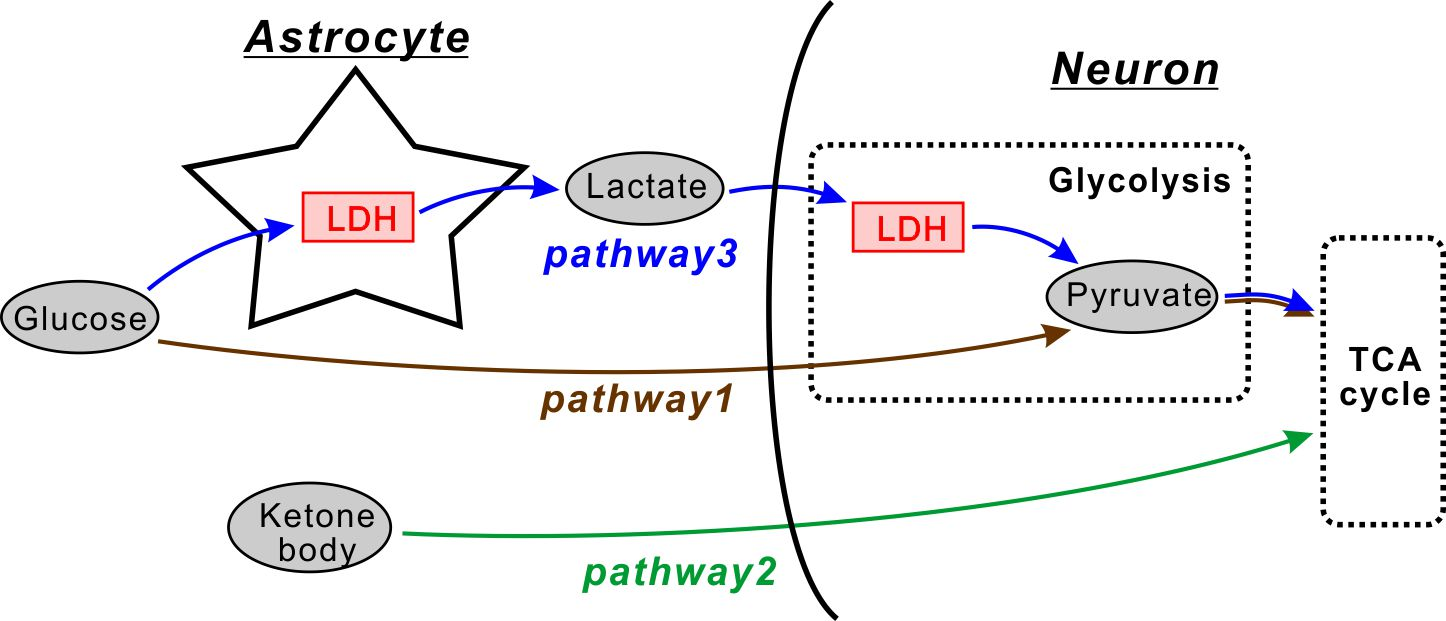Okayama University Medical Research Updates (OU-MRU) Vol.10
May 07, 2015
Source: Okayama University, Center for Public Affairs and Communications
For immediate release: 27 April 2015
Okayama University research: Enzyme-inhibitors treat drug-resistant epilepsy
(Okayama, 28 April) Studies reveal how high-fat low-carb diets affect brain activity and highlight an approach for treating epilepsy with metabolic drugs.
One percent of the world’s population suffer from epilepsy, and a third of sufferers cannot be treated with antiepileptic drugs. Diet control has been used to treat patients suffering from drug-resistant epilepsy since the 1920s, but how metabolic processes affect epilepsy has not been fully understood. Now researchers at Okayama University and Kawasaki Medical School have identified the metabolic pathways altered by diet treatments, the enzymes that can control them and potential metabolic drugs that may be effective for treating types of epilepsy that are resistant to other drugs.
‘Ketogenic’ diets used to treat epilepsy are high in fat and low in carbohydrate. Due to the scarcity of glucose available as a result, the brain metabolises ketones, which uses a different metabolic pathway.
Tsuyoshi Inoue and his team examined neural cells in an artificial cerebrospinal fluid solution switched from glucose to ketones. When glucose was switched to ketones the cells became hyperpolarized - a change in the cell’s membrane potential that makes neurons less prone to becoming excited and active.
The researchers further broke down the processes in the metabolism of glucose and identified a crucial enzyme – lactate dehydrogenase (LDH). Blocking LDH mimicked the switch from glucose to ketones in vitro. Further in vivo tests on mice confirmed the effect.
By testing the drugs already in use they identified LDH inhibitory action in stiripentol, a drug used for a rare form of the epilepsy. By modifying its chemical structure, they found an alternative LDH inhibitor with a similar structure that was more effective for in vivo tests on mice. They conclude, “Our study opens a realistic path to develop compounds for drug-resistant epilepsy by targeting LDH enzymes with stiripentol derivatives.”
Background
Epilepsy
Epilepsy describes the neurological disorder that results in seizures that have no other known cause. The seizures result from excessive excitation in the cortical nerve in the brain and the length and severity of the seizures may vary.The transmission of signals by neurons relies on the rapid rise and fall of the membrane potential, and is affected by cell polarization. When the cell membrane becomes hyperpolarized, a greater stimulus is required to produce an action potential. As a result hyperpolarization can prevent the excessive cortical activity that causes epileptic seizures.
Glucose and ketone metabolic pathways
Ketones directly activate the tricarboxylic acid (TCA) cycle that generates energy in aerobic respiration. In contrast glucose and lactate are converted to pyruvate in glycolysis, which are then used as the main input and intermediates of the TCA cycle.The researchers studied the activity of neural cells from the basal ganglia – a region of the brain that is important for the propagation of seizures - in artificial cerebrospinal fluid in vitro. They found that the replacement of glucose with ketones led to hyperpolarization of the cell membrane. The hyperpolarization was recovered by the addition of lactate, suggesting that inhibitors of the enzyme LDH - which catalyses the conversion of lactate into pyruvate - may have the same effect on epilepsy as ketogenic diets.
Stiripentol and analog
Stiripentol is an antiepileptic drug found to be effective for a particular type of epilepsy, Dravet syndrome. The chemical structure of stiripentol differs to most antiepileptic drugs, prompting the researchers to explore other chemicals with a similar structure that have LDH inhibiting and antiepileptic actions.Isosafrole has a similar structure to stiripentol but with certain parts of the chemical structure absent (i.e. the hydroxyl and tertiary-butyl groups). The researchers found that isosafrole strongly inhibited LDH and suppressed signs of seizure such as spontaneous high voltage spikes and paroxysmal discharges in mice tests. The results suggest that LDH inhibitors may be effective for types of epilepsy that cannot be treated with traditional drugs.

Figure caption
A scheme of energy metabolic pathways in the brain. Glucose is transported into neurons and converted to pyruvate in glycolysis (pathway 1, brown). Ketone bodies directly activate the TCA cycle in neurons (pathway 2, green). Glucose is also transported into astrocytes (a type of glial cell) and converted to lactate by LDH, which is then released to neurons and converted to pyruvate by LDH (pathway 3, blue; the astrocyte-neuron lactate shuttle).Reference
Nagisa Sada, Suni Lee, Takashi Katsu, Takemi Otsuki, Tsuyoshi Inoue. Targeting LDH Enzymes with a Stiripentol Analog to Treat Epilepsy. Science (March 20, 2015) Vol. 347 no. 6228 pp. 1362-1367DOI: 10.1126/science.aaa1299
http://www.ncbi.nlm.nih.gov/pubmed/25792327
Correspondence to
Associate Professor Tsuyoshi Inoue, Ph.D.Department of Biophysical Chemistry, Graduate School of
Medicine, Dentistry and Pharmaceutical Sciences, Okayama
University, Okayama 700-8530, Japan.
Contact information
Public Relations and Information Strategy
E-mail: www-adm(a)adm.okayama-u.ac.jp
For inquiries, please contact us by replacing (a) with the @ mark.
Website: //www.okayama-u.ac.jp/index_e.html
Okayama Univ. e-Bulletin: //www.okayama-u.ac.jp/user/kouhou/ebulletin/
Okayama Univ. e-Bulletin (PDF Issues): //www.okayama-u.ac.jp/user/kouhou/ebulletin/ebulletin.html
About Okayama University (You Tube): https://www.youtube.com/watch?v=iDL1coqPRYI
Okayama University Image Movie (You Tube): https://www.youtube.com/watch?v=_WnbJVk2elA